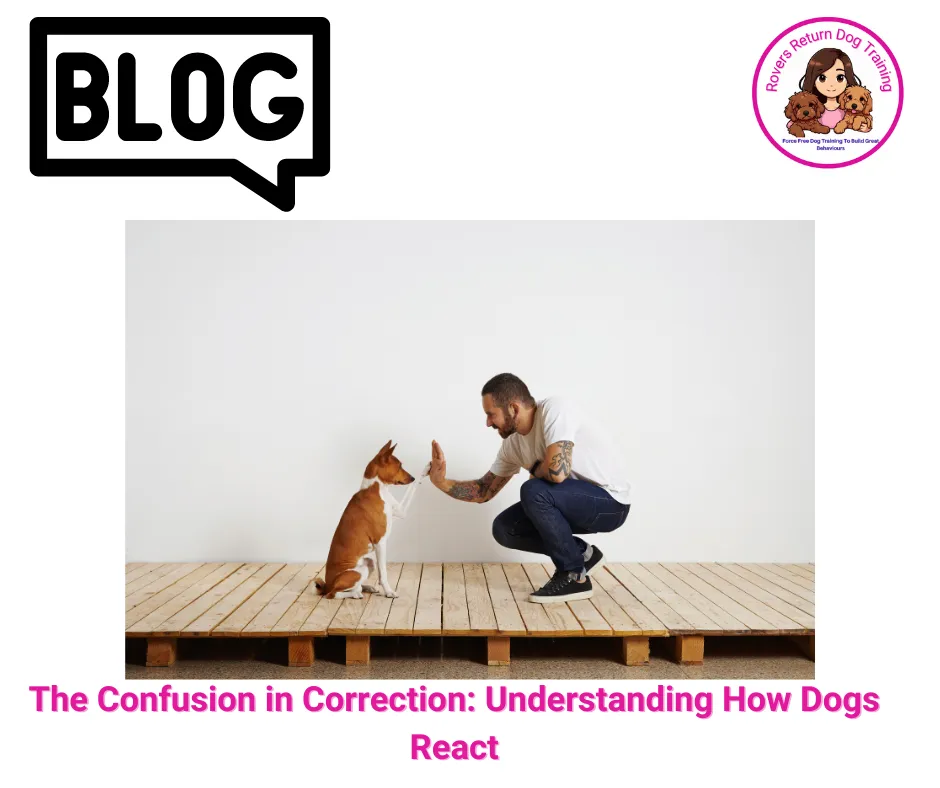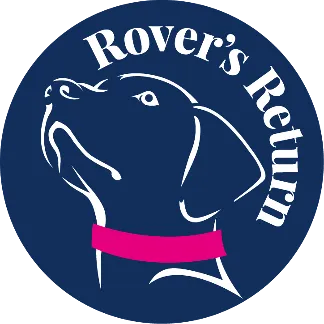Book a FREE 1:1 Assessment Call By Clicking HERE
Specialising In Dog Reactive Behviour
Accredited by APDT, ABTC and UK DOG Behaviour and Training Charter
Qualified and Experienced
Force Free Trainer and Behaviourist
Dog Training Leicestershire Educational Blogs

The Confusion Of Corrections In Dog Training
The Confusion in Correction: Understanding How Dogs React

Introduction:
For decades, correction-based training methods have been prevalent in the world of dog training. However, recent advancements in our understanding of canine behaviour have shed light on the potential pitfalls of such approaches.
One significant consequence is the confusion it can cause in dogs. This article will explore why dogs can become confused by corrections and their implications on their training and emotional well-being.
The Nature of Correction:
Correction-based training relies on punishing undesirable behaviours to discourage their recurrence. This can involve verbal reprimands, physical corrections, such as lead jerking or aversive tools like choke chains or shock collars. While corrections may suppress behaviour temporarily, they often fail to address the underlying causes and can lead to confusion in dogs. Often we believe we are correcting the undesirable behaviour, when in fact the dog has moved on and is thinking something else and you have unintentionally punished a different behaviour.

Lack of Clarity:
One of the primary reasons dogs become confused by corrections is the lack of clarity in communication.
Dogs rely on immediate feedback to understand which behaviours are desirable and which are not. However, corrections are often inconsistent and can be misinterpreted by the dog, leading to confusion about what they're being punished for.
The behaviours we believe to be naughty and unwanted can be natural, instinctive behaviours. When these are corrected the dog does not understand why, as they are doing what dogs do.
Mixed Signals:
Inconsistent corrections can send mixed signals to the dog, making it challenging for them to discern the appropriate response. For example, if a dog is sometimes scolded for jumping on visitors but allowed to jump on family members, they may struggle to understand when jumping is acceptable and when it's not.
The dog's brain is not as developed as the human brain, they lack the pre-frontal cortex which is responsible for thinking and actions. Making decisions is based on situations controlled by the pre-frontal cortex. Reactions are based on primal brain functions in the limbic system in the dog's brain.
Unless trained the dog's brain will react as to whether the situation is giving them a good outcome, which they seek to get more of, or a bad outcome, that they seek to avoid.
Stress and Anxiety:
Constant corrections can induce stress and anxiety in dogs, further exacerbating their confusion. They may become apprehensive about engaging in any behaviour for fear of punishment, leading to a state of uncertainty and unease.
Learned Helplessness:
Dogs subjected to repeated corrections without clear guidance may develop learned helplessness, where they believe they have no control over their circumstances. Instead of learning alternative behaviours, they become passive and resigned, unsure of how to avoid punishment and shut down.
The Role of Timing:
Many people believe that corrections work when the timing is right when corrections are delivered promptly and consistently the dog associates them with undesirable behaviour. However, if corrections are delayed or inconsistently applied, the dog may struggle to make the connection between their actions and the consequences, leading to confusion.
In reality, corrections are rarely applied correctly, and when they are they still cause emotional harm to the dog.
If the correction applied has stopped the behaviour, then avoidance has been adopted as a means to cope with the situation. Avoidence is not healthy and you have not addressed the reasons why the behaviour was necessary in the first place.
The Importance of Clarity and Consistency:
To avoid confusion in dogs, it's essential to provide clear and consistent guidance during training. This involves:
Clear Communication: Use clear communication of what you need from your dog by training them. Dogs do not understand human behaviour as much as humans don’t understand dogs. By reinforcing desired behaviours with praise and rewards, and redirecting undesirable behaviours without resorting to punishment you will have a dog that learns to behave well.
Consistent Training: Establish consistent training for your dog and reinforce them consistently across different situations and environments. Avoid sending mixed signals that can confuse your dog about what is expected of them.
Positive Reinforcement: Emphasise positive reinforcement techniques that reward desired behaviors, rather than relying solely on corrections. Positive reinforcement builds trust and strengthens the bond between you and your dog, fostering a positive learning environment.
Conclusion:
While corrections may seem like a quick fix for undesirable behaviours, they will result in confusion and stress for dogs which can increase the risk of aggressive and reactive behaviours. By providing clear communication, consistent training, and positive reinforcement, we can help our canine companions understand what is expected of them and create a harmonious relationship built on trust and mutual respect. By prioritising clarity and consistency in our training methods, we can ensure that our dogs feel confident, secure, and understood
Rovers Return Dog Training and Behaviour do not believe in the use of harmful methods for dog training and seeks to educate everyone in a better understanding of dogs and reinforcement which is misunderstood by dog owners and trainers.
Highly Qualified Behaviourist
Accredited by APDT, ABTC and UK DOG Behaviour and Training Charter
Accredited Scentwork Instructor
Force Free Trainer and Behaviour
Force Free Trainer and Behaviour
Accredited Scentwork Instructor
Accredited by APDT, ABTC and UK DOG Behaviour and Training Charter
Highly Qualified Behaviourist
Contact Us
Sam: 07725 802995
You can contact us via Live Chat button at the bottom of the screen or the contact box to the right.
You can also book one of our services online using the View Dates buttons under the service you require.
© 2023 by Rovers Return Dog Trainers Academy - Force Free Dog Training Lutterworth, Broughton Astley, Leicestershire, Hinckley, Nuneaton, Stoney Stanton, South Kilworth, Ullesthorpe
Privacy Policy | Terms and Conditions | Terms and Conditions of Services | Sitemap


Facebook
Instagram
X
LinkedIn
Youtube
TikTok